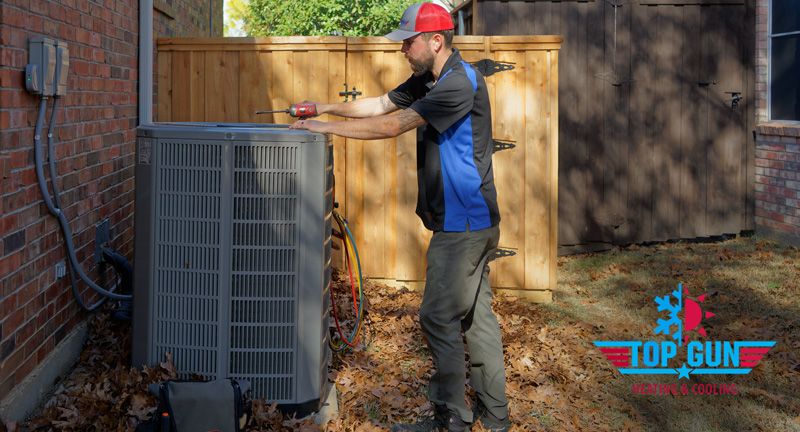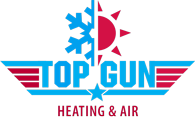
Central Heating and Air System Operation
A central heating and air system is complex and if you haven’t been trained to work on them, its likely you’ll have questions about their operation in your home. Most residential systems are split systems where the individual components are segregated to the indoor units and outdoor units.
How Does a Furnace Work?
Obviously you know the furnace in your home is responsible for burning a source of fuel to heat your home or business. HVAC questions are more centered around how it does this exactly. Most furnaces are what we call air to air furnaces, where they heats the air it circulates around your home and indoor spaces. Furnaces typically burn natural gas, oil, or propane to accomplish this. Air Handler units are part of a heat pump system which we’ll discuss later. These units use electric strip heat to heat the air it is circulating around your house to warm it.
When you turn your thermostat to heat mode and set it to the desired temperature, a sequence of operations take place at the furnace. First the draft inducer motor is energized to create a draft in the heat exchanger that draws the combustion gases out and up a flue pipe venting outside the house. Second, a systems intermittent pilot light or electronic ignition is energized to ignite the burner. Once a flame is proven by the flame sensor, a temperature probe signals the blower motor to come on. As air is pulled from the return air ducts in your house across the heat exchanger, it is warmed and distributed throughout your home by ducts to supply registers. The system will remain on until the temperature set point at the thermostat is satisfied. The sequence of operations for the furnace is controlled by the main printed circuit board housed in the blower sections. Its also worth mentioning that the blower used for the heating cycle is the same used in cooling mode too. Furnace control boards typically have a LED light that will flash error codes that can lead to the source of a problem. Sometimes these can be misleading though, and the best course of action at this point is to call your local HVAC service professional to diagnose the problem.
Electric Air Handlers can either be stand alone or used in conjunction with a heat pump system. Like furnaces, this is where the blower for air distribution in your home or business is housed. Instead of a fossil fuel being burned though, the air handler uses electric heating elements controlled by the thermostat. In heat pump systems these electric resistance coils are used to “boost” the temperature and output of the heat pump system. When temperatures outside drop below 30 degrees or colder, heat pumps tend to operate less efficiently and so the heat strips will then be activated by the heat pump. Such operations are usually done automatically. Houses that use heat strips solely for a source of heat often have higher electric bills.
How Does an Air Conditioner Work?
Many homeowners have questions about the air conditioning process and how their A/C unit works. There are typically four basic components that make up the air conditioning system. these are as follows: the compressor, condenser coil, evaporator coil, and metering device. The compressor and condenser coil are housed in a single outdoor unit technicians often refer to as the “condenser.” The evaporator coil and metering device are house inside, attached to the furnace and duct system. The compressor pumps the freon in vapor form to the condenser coil, where it is condensed to liquid form before traveling inside to the evaporator section. At the evaporator section the metering devices only allows a certain amount of refrigerant into the evaporator. Thereby changing the freon from liquid form to vapor/liquid and greatly reducing the pressure. This also causes the temperature of the freon to drop substantially. So when air is pulled across the evaporator coil, the heat from it is transferred to the freon causing it to “boil” back off to a vapor. The vapor moves back to the condenser unit outside where the process starts all over again. This process of air conditioning is the removal of heat from the inside of your house to the outdoors via the medium of the refrigerant. This is a constant loop and the process is repeated until the desired temperature is reached inside the home or business.
How Does a Heat Pump Work?
Finally, we get to talk about heat pumps and how they work. A Heat pump is a different kind of air conditioning condenser that has additional components and controls that create questions on how they operate. Using the compressor heat pumps offer both heating and cooling by moving heat from one ares to another. During the heating season, heat pumps extract heat from the outside (if we get real sciency with the definition of heat, then yes, technically there is still heat outside) and condense it using the medium of freon. Heat pumps are equipped with a reversing valve that pumps the high pressure, high temperature freon inside first to the evaporator coil. As air from the blower moves across it, it heats the air going into your home. Essentially in heating mode, your evaporator becomes your condenser, and your condenser becomes your evaporator, and the flow of freon is “reversed.” Simple right? In cooling mode, the flow of refrigerant is identical to the air conditioning process described in the previous paragraph.
